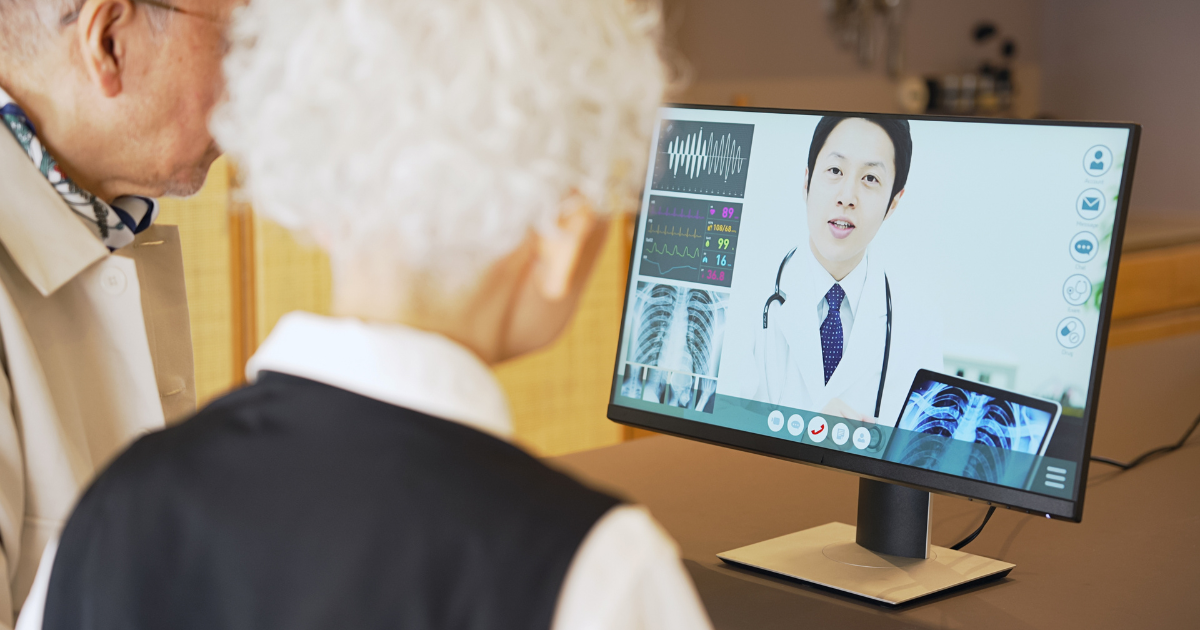Countless studies on the impact of telehealth and virtual nurses have emphasized the assumption that it enhances safety for both patients and providers. There is also the opportunity to expand services without geographical limitations and enhance care services in rural communities. Due to the few specialists located in rural areas, telemedicine has the potential to resolve countless hurdles these communities face for even basic healthcare services.
Telehealth provides care to chronically ill patients with the ability to receive long-term care from the best expert available to them, without debilitating costs of relocation, travel, leave from work, or childcare. Patients can get the care they need without putting the rest of their life on hold.
In 2020, RN turnover rose to 18.7% due to side effects from burnout. The string of events that have contributed to this nursing shortage is due to many factors. But we want to focus on the elements that we can control, and that is providing nurses with the tools to empower their abilities to offer effective care, without spreading themselves too thin.
These statistics also emphasize hospitals’ lack of resources in case of scenarios such as a pandemic, or any use case that uses up hospital resources suddenly. Thanks to virtual nurses, we can create incentives for nurses retiring or suffering from burnout, with part-time remote work. Something that has not been an option for them in the past.
Virtual Nurses: are they supporting overburdened nurses?
A common misconception about E-sitters and remote observation is that it replaces in-person nurses. However, 1:1 patient sitting can be a substantial expense to the hospital, and it also uses up valuable nurse time that could be allocated elsewhere.
By implementing a virtual nurse solution, one nurse from your rural facility can observe up to 16 rooms at a time, instead of having one physical nurse monitor each room. This saves time, enhances productivity, reduces falls and injuries, and improves nurses’ workflow.
This reallocation of scarce resources allows your healthcare team to provide effective care to patients and help reduce the substantial wait times we are seeing for care services. The goal of E-sitters is to maximize the efforts our nurses are putting in each day, as opposed to replacing their roles.
For a fully transparent look at telehealth services, below is a case study by Anderson J and Singh J, they outlined a SWOT analysis on telemedicine and determined the following:
- Strength:
- Protect the health and safety of staff and patients
- Maintain continuity of care
- Expanded services and remote monitoring services
- Weakness:
- Patient and staff comfort with technology
- Lack of buy-in from staff that will perform telehealth
- Reliability of audio-video technology used to complete telehealth visits
- Opportunities:
- Ability to offer consultative services data
- Alternative clinical scheduling models
- Threats:
- The end of the public health emergency and 1135 waivers that allow IHS to offer this service
- Internet connectivity and speed in very rural low-income areas

How Virtual Nurses are Empowering Healthcare Providers
There are countless articles, statistics, and papers that explore the benefits of virtual nurses and remote observation. However, something that is commonly overlooked is how these features directly help our nurses, and how they work to aid them in this ongoing nursing shortage.
Cost Savings
The upfront costs associated with virtual nursing technology may seem daunting, especially if you do not have much experience with these solutions already. However, remote observation can save hospitals hundreds of thousands by reducing patient falls, sitter costs, and nurse injuries. These cost savings can be reallocated to better resources for the hospital and continue to invest in technology that will enhance care services and reduce the burden many nurses are experiencing.
In terms of additional revenue for hospitals, according to The Rural Broadband Association (2017), telemedicine and virtual nursing technology can increase revenue for rural hospitals, due to revenue from more medical services staying in the local economy. Their study estimates that not only can each facility see up to $150,000 in additional annual revenue, but patients can also save approximately $10,000 in saved travel expenses, saved wages, and miscellaneous costs in traveling for care services. Telemedicine and E-sitters are an invaluable asset in keeping revenue in rural communities and benefiting the local economy.
Patient Experience
Nurses directly benefit from patients having a positive experience. When healthcare staff are not overburdened and are backed with the necessary support to provide adequate care, they can educate their patients and build more quality connections.
Virtual nurses help provide 24/7 patient observation without the feeling of invasiveness. Patients also have the option to select a privacy setting when they need it. Several online studies have found that telemedicine technology can help reduce patients’ length of stay. One of the primary reasons for this is the ability to detect symptoms in their preliminary stages and avoid further deterioration.
Virtual observation technology is not limited to monitoring the patient’s stay, it can also provide collaboration opportunities with care specialists across the country. This feature enables rural facilities to offer the best quality care to patients in their local community, rather than sending them to larger hospitals that are hours away. The ability to stay closer to home is another benefit for patients and may improve their mood during their stay. It also saves patients thousands in travel to specialist facilities or foregoing the treatment they need, which is common for residents in rural communities.
Enhanced Workflow
This type of technology goes beyond basic observation. Healthcare professionals are equipped with tools that improve their existing workflow and help them stay on track during their rounds. Nurses can view patients’ records and past notes left by providers, and they can also add their notes and images for future reference. Nurses can also categorize patients by the severity of their symptoms, to better determine who needs the most attention. This combination of features saves nurses valuable time which is crucial to provide the best possible care to patients.
Staff Retention
Virtual Nurses can ease the substantial stress that is weighing on the healthcare industry. As you can see based on the points listed in this article, this technology alleviates nurses’ workflow, provides up-to-date technology to enhance care services, and saves the hospital in costly 1:1 sitter costs. Although telemedicine does not fix the burnout that healthcare professionals are experiencing, it does offer more options and can alleviate their workload.
Virtual nursing technology provides nurses with the ability to work remotely and makes hybrid work a possibility. Nurses can now offer virtual services via audio-visual technology and reduce their workload temporarily rather than be forced to take personal time due to burnout.
This enhanced implementation of technology can also extend nurses’ careers, by working remotely instead of retiring straight away. It also means that valuable knowledge from the older generation is not lost when they reach retirement age.
Are you ready to implement virtual nurse technology into your workflow?
The VidyoHealth team has worked diligently to support a wide variety of healthcare providers implement their telemedicine solution, that meets their needs and provides them with the support they need. Our team believes that to enhance the patient’s experience and continue to enhance the healthcare industry, we need to support the staff working persistently around the clock. Contact a Telehealth Expert today, to discover how telemedicine will benefit your facility.
